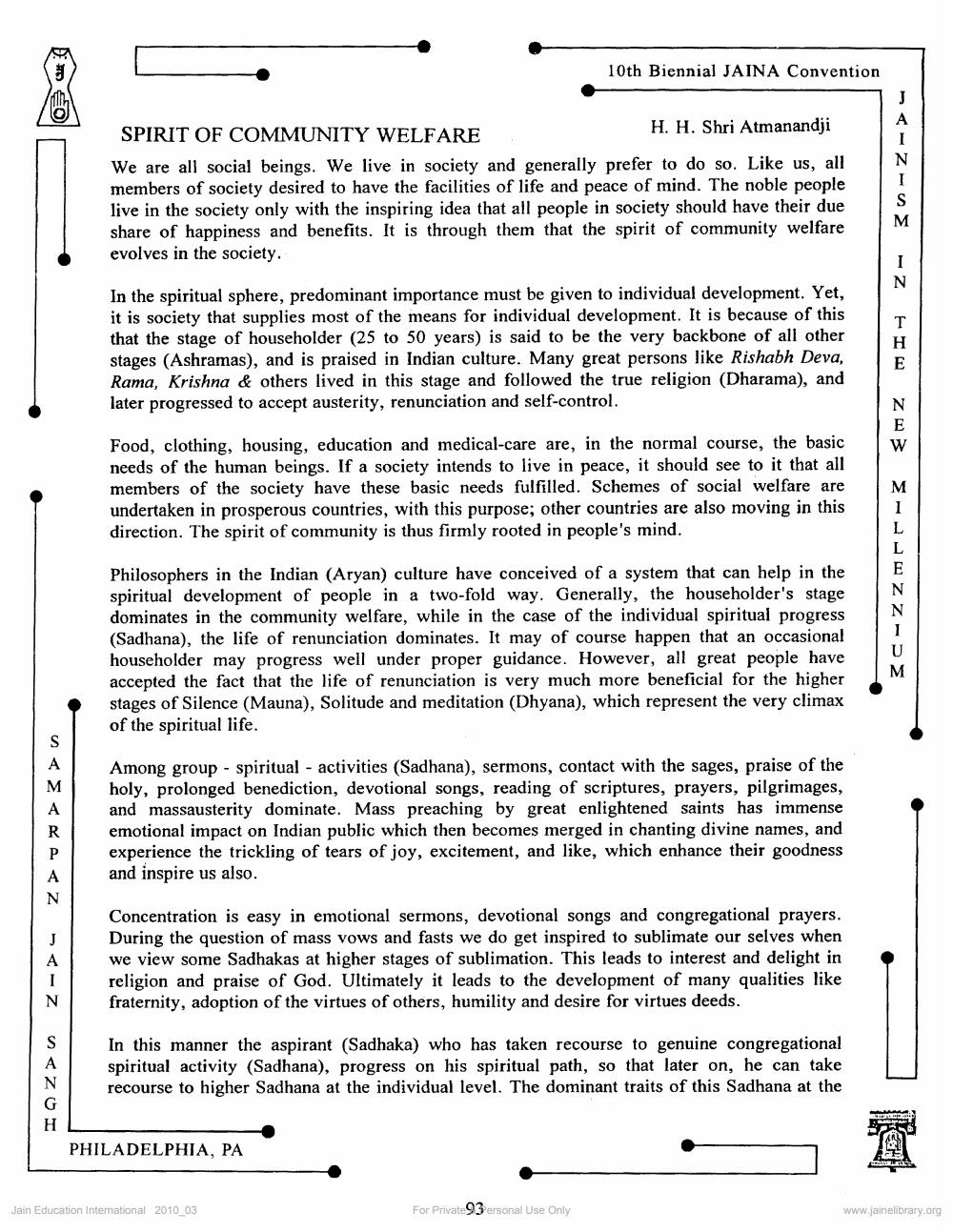________________
10th Biennial JAINA Convention
SPIRIT OF COMMUNITY WELFARE
H. H. Shri Atmanandji We are all social beings. We live in society and generally prefer to do so. Like us, all members of society desired to have the facilities of life and peace of mind. The noble people live in the society only with the inspiring idea that all people in society should have their due share of happiness and benefits. It is through them that the spirit of community welfare evolves in the society.
them the ple in sociehind. The
In the spiritual sphere, predominant importance must be given to individual development. Yet, it is society that supplies most of the means for individual development. It is because of this that the stage of householder (25 to 50 years) is said to be the very backbone of all other stages (Ashramas), and is praised in Indian culture. Many great persons like Rishabh Deva, Rama, Krishna & others lived in this stage and followed the true religion (Dharama), and later progressed to accept austerity, renunciation and self-control.
Food, clothing, housing, education and medical-care are, in the normal course, the basic needs of the human beings. If a society intends to live in peace, it should see to it that all members of the society have these basic needs fulfilled. Schemes of social welfare are undertaken in prosperous countries, with this purpose; other countries are also moving in this direction. The spirit of community is thus firmly rooted in people's mind.
Philosophers in the Indian (Aryan) culture have conceived of a system that can help in the spiritual development of people in a two-fold way. Generally, the householder's stage dominates in the community welfare, while in the case of the individual spiritual progress (Sadhana), the life of renunciation dominates. It may of course happen that an occasional householder may progress well under proper guidance. However, all great people have accepted the fact that the life of renunciation is very much more beneficial for the higher stages of Silence (Mauna), Solitude and meditation (Dhyana), which represent the very climax of the spiritual life.
Among group - spiritual - activities (Sadhana), sermons, contact with the sages, praise of the holy, prolonged benediction, devotional songs, reading of scriptures, prayers, pilgrimages, and massausterity dominate. Mass preaching by great enlightened saints has immense emotional impact on Indian public which then becomes merged in chanting divine names, and experience the trickling of tears of joy, excitement, and like, which enhance their goodness and inspire us also.
Concentration is easy in emotional sermons, devotional songs and congregational prayers. During the question of mass vows and fasts we do get inspired to sublimate our selves when we view some Sadhakas at higher stages of sublimation. This leads to interest and delight in religion and praise of God. Ultimately it leads to the development of many qualities like fraternity, adoption of the virtues of others, humility and desire for virtues deeds.
In this manner the aspirant (Sadhaka) who has taken recourse to genuine congregational spiritual activity (Sadhana), progress on his spiritual path, so that later on, he can take recourse to higher Sadhana at the individual level. The dominant traits of this Sadhana at the
PHILADELPHIA, PA
Jain Education Intemational 2010_03
For Private 93ersonal Use Only
www.jainelibrary.org




